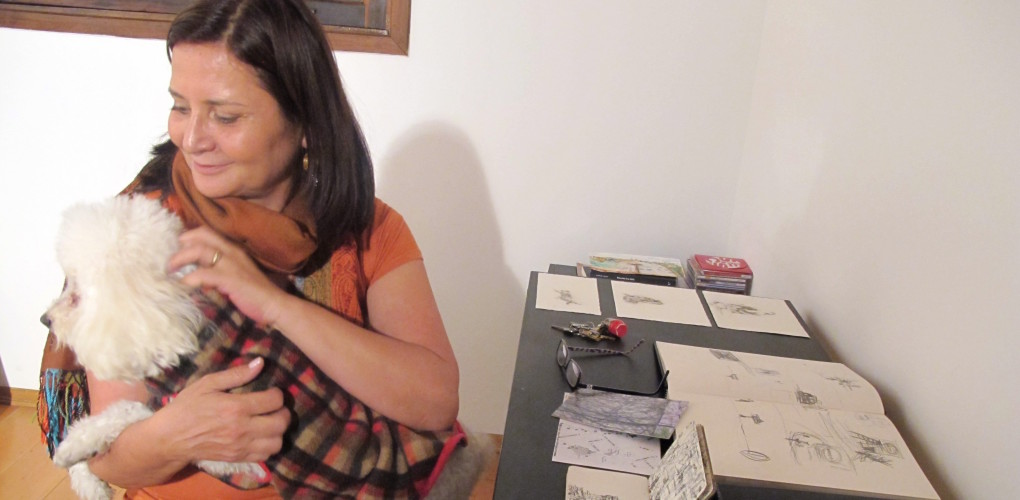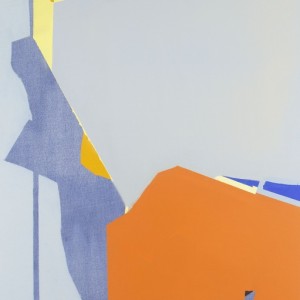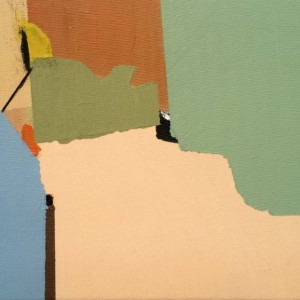Inside the Studio
 Sueli Espicalquis
Sueli Espicalquis
Favorite material to work with?
Oil and wax on canvas.
How many years as an artist?
I graduated in Law and Mathematics. I worked as a teacher for some time and then in telecommunications and in the judicial system. I developed a career as a judge. After I retired, I focused on the visual arts, which have always interested me. I started taking painting courses in 2005. Since 2006, I’ve participated in juried art shows, museum exhibitions, and other cultural spaces.
What was the best advice given to you as an artist?
Work! Because if you focus on your work, the work itself will give direction to its own development.
Where is your studio?
In São Paulo, SP, Brazil.
Art school or self-taught?
Although I have not attended an art school, I was very fortunate to have the guidance of artists and university professors through independent courses who helped me in my research and focus on concepts as an artist. They were fundamental to my training and for that I am very grateful.
Prefer to work with music or in silence?
I prefer to work with music. The genre varies depending of the humor of the day.
Where can we find you outside of the studio?
Walking my dog or visiting exhibitions and museums. I also sing in a choir that follows an anthropomorphic method. In August last year I attended an international meeting, “The World Singing”, in Dornach, Switzerland. I do gymnastics and take dance classes, based on the re-education of movement. I also like to get my family together and cook for them.
What’s around the corner from your place?
It is a neighborhood with houses, drugstores, grocery stores, parks, banks and bakeries. My studio is a restored house in this area. With the real-state boom, many houses were demolished and high-risers were built, followed by the expansion of the subway lines as well as the monorail. As a result, the neighborhood has become very busy.
If you couldn’t be an artist, what would you do?
A clown. Being present in the act is an exercise of self-perception, concentration, and flexibility.
Favorite contemporary artist?
I have a lot of favorite ones but at this time I admire the work of James Turrel because it provides the sensation of being part of the artwork through light invasion. This can be seen in his work, Ganzfeld APANI, which was exhibited on the Venice Bienale in 2011 as well as on the Aten Reign.
Day job?
I am fortunate to be able to dedicate myself totally to my art.
If you could only have one piece of art in your life, what would it be?
Olive Grove, by Van Gogh. It affected me the same way E.E. Cummings expresses in this poem:
… now the ears of my ears awake and
now the eyes of my eyes are opened.
Use anything other than paint?
I also work with paper, using ink and graphite. I recently did a series of glowing cigarette on paper and showed them in the exhibition, Form Senses, Art and Eros, the Place of Eroticism in Art, in the Fabrica Braço de Prata, Lisbon, Portugal. The sound was also a founding element in my video called Sound Figures (based on the experiments of Ernst Chladni, with sand, aluminum plate and violin bow – the friction of the bow plate produces a sound that causes the displacement of sand and forms the figures). Now I’m working with pictures that records the solubility and the crystallization of salt in water inside glass bowls.
What do you collect?
Knick knacks.
Is painting dead?
I don´t think so because painting is still constantly present. For instance, at Documenta 13, in Kassel, Germany, Francis Allys, Yan Lei among others presented paintings. Also on the 55th. Biennial of Venice, George Condo and Prabhavathi Meppayil did it as well.
Monet or Manet?
Monet, light, rhythm, color, the flatness of perspective…awesome.














